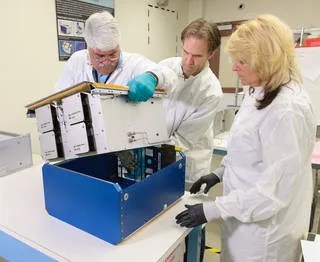Animal Biology Program
What We Study
Focus of Space Biology Animal Research
The focus of Space Biology Animal research over the past five to ten years has been on the musculoskeletal, cardiovascular and immune systems. Over the past decade NASA has funded over 50 experiments using vertebrate animals. Two of those flew on the Russian Foton M3 mission in 2007 using newts (Pleurodeles walti) or geckos (Pachydactylus turneri), however, the majority of these experiments used rodents. As is the case with ground-based biomedical research, rodents are often the vertebrate animal of choice for space studies. In addition, Space Biology has funded multiple experiments conducted with invertebrates including multiple host/pathogen studies with Drosophila melanogaster, a neurosensory/behavior study with snails flown jointly with Russian co-investigators on the Foton M2 and M3 missions, and one host/pathogen on orbit infection study with Caenorhabditis elegans with Salmonella typhimurium, flown on the ISS.
Why test on animals?
Research subjects such as rodents (and other animals) allow us to control for variables that are related to exposure to spaceflight and conduct experiments that would be impossible to test on human subjects. Space Biology researchers can use a variety of methods, techniques, and tools to elucidate the effects that spaceflight has on model organisms at the molecular, cellular, and systemic levels.
One example of a useful tool or methodology is the use of “knock out” animals, which are generated through the deletion a specific gene (or multiple genes) in the animal model of interest. This allows Space Biology researchers to conduct experiments that can determine the effects that a tested experimental condition has on the animal both in the presence and absence of the gene(s) in question. Such animals can help us discover which genes play an essential role in acclimating an organism to the space environment, and the mechanisms by which they do that.
Another important tool is the use of inbred strains of animals, which are, for all intents and purposes, genetically identical. These animals provide researchers with the opportunity to conduct experiments with ground and flight populations that all have the same DNA (the equivalent of flying a lab full of twins), so that we can better attribute changes in biological responses to a spaceflight.































